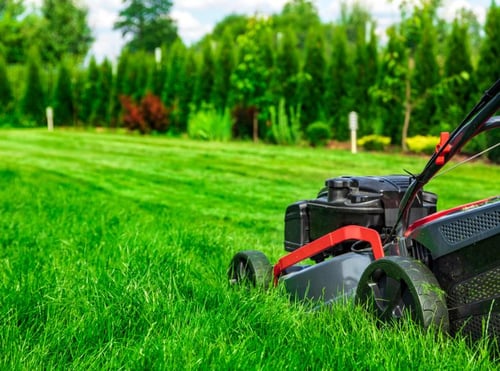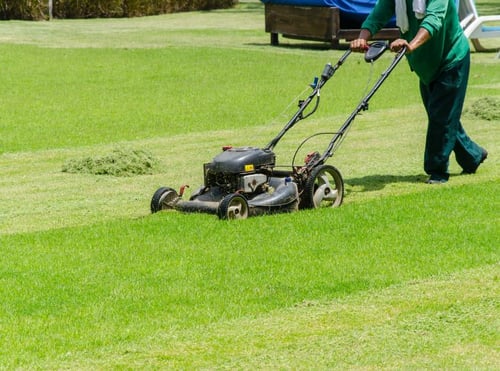
Home / Here on Earth / Understanding Mowing Lawns in Florida
Mowing lawns is essential to lawn care and maintenance, especially in Florida, where the weather is warm and humid year-round. While it may seem like a simple task, there are several factors to consider when mowing lawns in Florida, such as the type of grass, the frequency of mowing, and the height of the grass. Understanding these factors and implementing proper mowing techniques is crucial to maintaining a healthy and beautiful lawn.
In this article, we will explore the various aspects of mowing lawns in Florida, including the best practices and tips to ensure your lawn stays lush and vibrant throughout the year. Whether you are a homeowner or a professional landscaper, this topic will provide valuable insights on how to mow lawns effectively in the Sunshine State.
Mowing Height
The optimum cutting height for a particular turf grass species is based on its growth habit and leaf width. Different grass species have different ideal mowing heights that promote healthy growth and prevent damage. For example, St. Augustine grass, which is a popular grass species in Florida, has an ideal mowing height of 3.5 to 4 inches, while Bermudagrass should be cut at 1 to 2 inches.
Mowing at the correct height ensures that the grass can produce enough energy through photosynthesis to maintain a healthy root system, while also preventing weed growth and conserving moisture in the soil. Mowing too short can weaken the grass and make it more susceptible to disease, pests, and environmental stresses, while mowing too high can cause shading and encourage thatch buildup. Therefore, it is crucial to know the ideal mowing height for your specific grass species and adjust your mowing height accordingly.
Mowing Frequency 
Mowing frequency is determined by the growth rate of the lawn, which is influenced by several factors, including grass species, time of year, weather conditions, and management level. The growth rate of the grass can vary throughout the year, with the grass growing more rapidly during the warmer and wetter months and slowing down during cooler and drier periods. Therefore, the frequency of mowing should be adjusted accordingly.
In North Florida, the grass may not need to be mowed during the winter months, depending on climatic conditions and grass species. During this time, the grass enters a dormant state, slowing its growth rate. However, it is essential to continue monitoring the lawn and mowing when necessary, especially during warm spells or excessive rainfall, which can stimulate grass growth.
On the other hand, during the growing season, it is recommended to mow the lawn regularly to maintain its appearance and health. Mowing too infrequently can cause the grass to become overgrown, leading to thatch buildup, increased weed growth, and a weakened root system. Therefore, it is essential to know the growth habits of your grass species and adjust the mowing frequency accordingly. A general rule of thumb is to mow often enough only to remove one-third of the grass blade at a time.
Clipping Removal for St Augustine Varieties
Leaving grass clippings on the lawn after mowing is a beneficial practice for the health of the lawn and the environment. When left on the lawn, the clippings break down and release nutrients back into the soil, which can help improve the overall health and appearance of the grass. In addition, leaving clippings on the lawn can also help reduce the amount of waste that ends up in landfills. However, if the lawn is not mowed frequently enough, clippings can accumulate and clump, creating problems for the lawn's health. In this case, it may be necessary to remove excess clippings to prevent damage to the grass.
When it comes to removing excess grass clippings from the lawn, a few options are available. One common method is to use a bagging attachment on the lawn mower to collect the clippings as you mow. This is a good option if you have let your lawn get too long before mowing, and the clippings are likely to clump and create an unsightly appearance.
Another option is to use a rake or leaf blower to collect the clippings after mowing. This method can be time-consuming, but it effectively removes excess clippings and prevents clumping. Alternatively, you can also use a mulching mower, which cuts the clippings into smaller pieces and leaves them on the lawn to decompose quickly.
Mowing Equipment
Lawnmowers come in various sizes, styles, and features, but the two basic types are reel mowers and rotary mowers. Reel mowers use a series of blades that spin in a horizontal plane to cut the grass, while rotary mowers use a single horizontal blade that spins at high speeds to cut the grass.
While reel mowers are still used for certain specialized applications, such as golf course putting greens or very low-cut lawns, most lawns are mowed with rotary mowers. Rotary mowers are more versatile and can handle a wider range of grass heights and types than reel mowers, making them more suitable for most residential and commercial lawn mowing applications.
In addition to the basic types of mowers, many variations are available with specialized features such as mulching capabilities, bagging attachments, self-propulsion, and different engine types. When choosing a lawn mower, it's essential to consider the size and type of your lawn and your personal preferences and budget to find the mower that will best meet your needs.
Good Mowing Practices 
Mowing the lawn may seem straightforward, but it's important to take certain procedures and precautions to ensure a safe and effective mowing experience. Here are some tips:
- Read the owner's manual as it will help you operate the equipment safely and effectively.
- Wear appropriate clothing and safety gear
- Clear the lawn of debris
- Adjust the mower height
- Mow at the right time
- Mow in a pattern
- Stay aware of your surroundings
